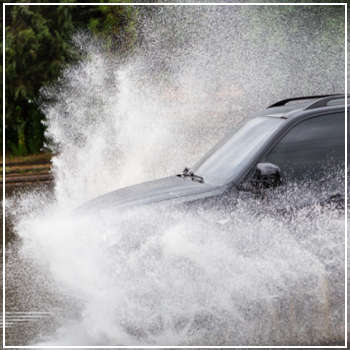 After a flood hits your neighborhood and your car is caught in the water, you might wonder if it can be saved. Unfortunately, there's no one-size-fits-all answer. The decision to repair or replace depends heavily on the extent of the damage. Here’s what you need to know.
After a flood hits your neighborhood and your car is caught in the water, you might wonder if it can be saved. Unfortunately, there's no one-size-fits-all answer. The decision to repair or replace depends heavily on the extent of the damage. Here’s what you need to know.
Immediate Steps After a Flood
As the storm passes, pay attention to how high the water rises. This will give you an idea of which parts of your vehicle may have been affected. Once the waters recede, take the following steps:
- Don’t start your car. Water in the engine can cause severe damage, even if it seems dry on the outside.
- Check the type of water. Saltwater is more damaging than freshwater due to its corrosive nature.
- Dry out your vehicle as much as possible. Use a wet/dry vacuum to remove moisture from the carpets, seats, and other interior areas. Then, contact a towing service to move your car to a professional repair shop.
- Inspect the fluids. Look for signs of water contamination in the oil, transmission fluid, and coolant. If found, these should be replaced immediately.
- Check the oil dipstick. If you see water droplets, it could mean the engine has taken on water, leading to serious internal damage.
Understanding the Damage Types
Flood-damaged vehicles typically face two main types of damage:
- Freshwater Damage: Generally less severe, especially if the car was not submerged for long. Cleaning and drying may be enough, with some minor repairs needed.
- Saltwater Damage: More dangerous and harder to repair. Salt accelerates corrosion, affecting electronics, wiring, and the engine. Professional cleaning, rewiring, and component replacement are often necessary.
Cosmetic Damage and Restoration
If the flood didn’t cause major mechanical issues, you may still need to address cosmetic damage. Water can cause Mold, warping, and rot in the interior materials like leather, wood, and fabric. To restore your car:
- Remove all panels and trim to allow full drying and prevent mold growth.
- Have a professional detail the interior, including shampooing carpets, conditioning leather, and polishing wood.
- Clean the air conditioning system to eliminate any musty smells caused by trapped moisture.
- Consider replacing the entire interior, especially if the damage is extensive.
Dealing with Mechanical Damage
Even if your car wasn’t running during the flood, water can still cause lasting damage. If the engine ingested water, it could lead to hydrolocking, which can destroy the engine. In such cases, a complete engine replacement might be necessary. If your car was submerged for a long time, you may need to replace the fuse box, control modules, wiring harnesses, and battery connections. These components can fail over time, even if the car appears to run fine at first. Whether you need a full detailing or major repairs, DaSilva’s is here to help. Bring your vehicle in for a thorough inspection and get the right guidance after a flood.
two-color mold frames,stamping mold frame companies,Kunshan sg mold frames,Kunshan SG export mould frames